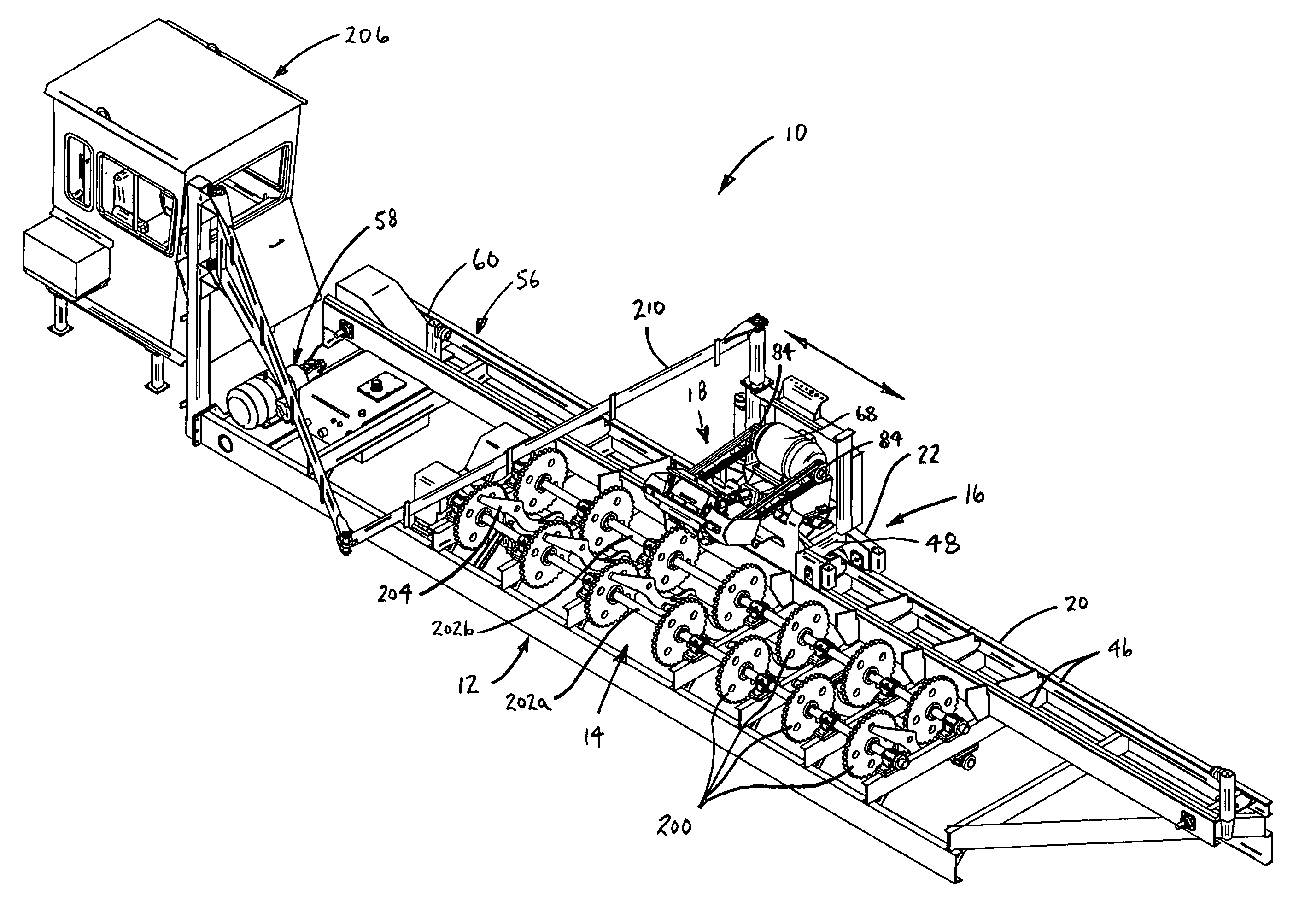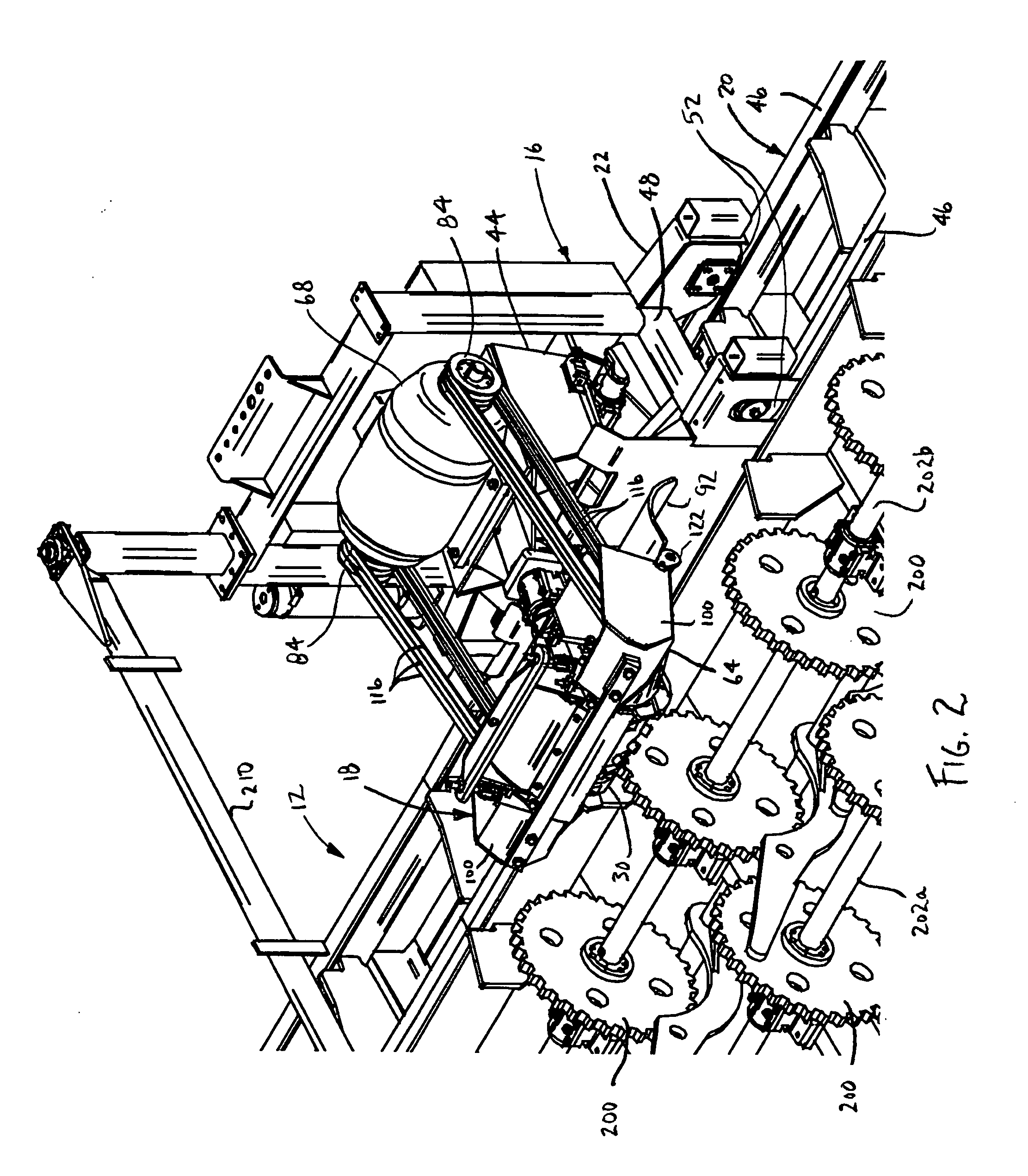Log debarking apparatus
a debarking apparatus and log technology, applied in the direction of tree debarking, flat surfacing machine, profiling/shaping machine, etc., can solve the problems of significant reduction of log revenue, difficult removal of cutter teeth, and negative impact on log lumber produced from logs, etc., to achieve simple and effective mechanism, prolong the life of cutter teeth, and facilitate removal of cutter teeth
- Summary
- Abstract
- Description
- Claims
- Application Information
AI Technical Summary
Benefits of technology
Problems solved by technology
Method used
Image
Examples
Embodiment Construction
I. Overview.
[0055]A Rosserhead debarker 10 in accordance with an embodiment of the present invention is shown in FIG. 1. The illustrated Rosserhead debarker 10 generally includes a superstructure 12, a log turning assembly 14, a carriage assembly 16, a cutter head arm 18 and an operator cab 100. The log turning assembly 14 is mounted on the superstructure 12 and provides a mechanism for turning a log to be worked. The carriage assembly 16 includes a track subassembly 20 supported on the superstructure 12 and a cutter arm carriage 22 mounted for linear movement along the track subassembly 20. The cutter head arm 18 is mounted to the carriage 22 so that it can be carried along the entire length of the log. The cutter head arm 18 includes a cutter head 30 and is pivotally mounted to the carriage 22 so that the cutter head 30 can be raised and lower onto a log (See FIG. 6, Line B). The cutter head 30 generally includes a drum 32 and a plurality of cutter teeth 34a-c. The drum 32 is rota...
PUM
 Login to View More
Login to View More Abstract
Description
Claims
Application Information
 Login to View More
Login to View More - R&D
- Intellectual Property
- Life Sciences
- Materials
- Tech Scout
- Unparalleled Data Quality
- Higher Quality Content
- 60% Fewer Hallucinations
Browse by: Latest US Patents, China's latest patents, Technical Efficacy Thesaurus, Application Domain, Technology Topic, Popular Technical Reports.
© 2025 PatSnap. All rights reserved.Legal|Privacy policy|Modern Slavery Act Transparency Statement|Sitemap|About US| Contact US: help@patsnap.com



